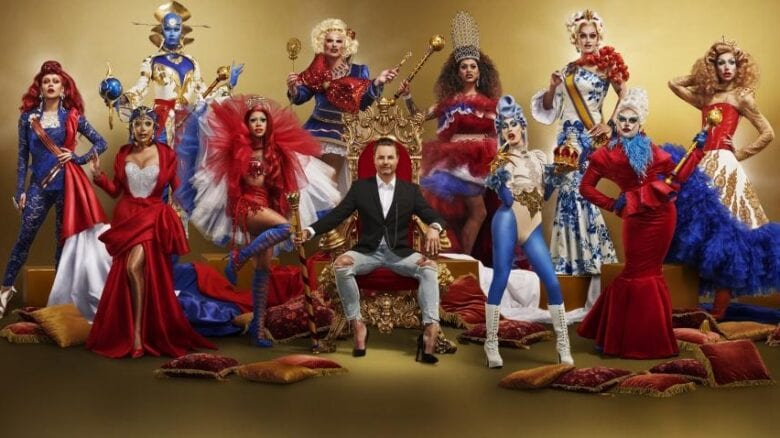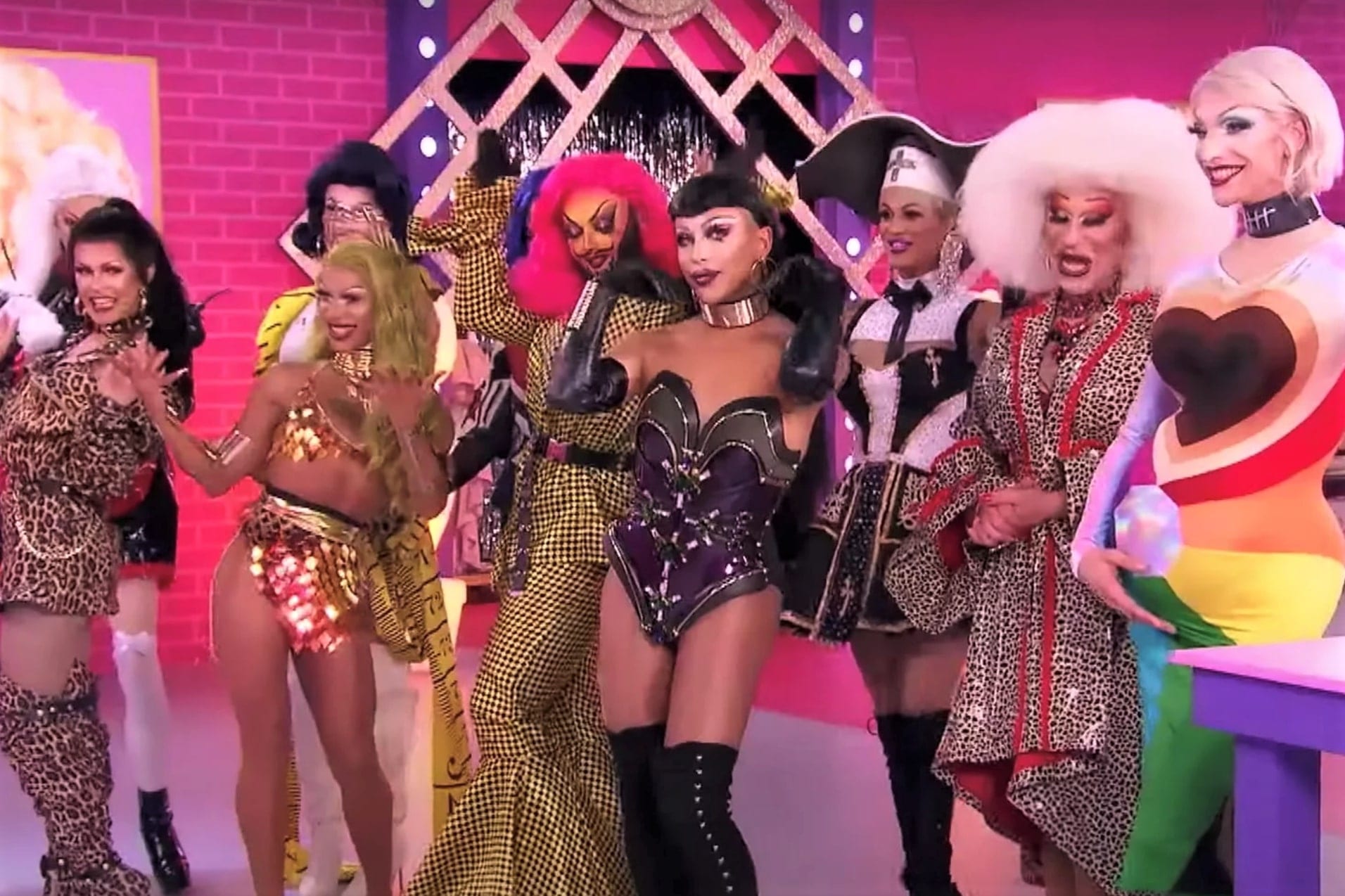If you thought Canada’s Drag Race was too runway-focused, boy, have I got a series to show you. Drag Race Holland, the latest international edition of the rapidly expanding Drag Race franchise now streaming on WOW Presents Plus, has been wildly entertaining so far. The drama— including an explosive fight between Brazilian-Dutch queen Miss Abby OMG and veteran Belgian queen Sederginne in Episode 4—is off the charts. The contestants have been funny, assertive and energetic, as good a cast as you’ll find on any Drag Race show. The host, Fred van Leer, has been spectacular—both quick with a quip and bold in his criticisms. And the runways have been incredible, serving some of the best looks we’ve ever seen in the franchise. The maxi-challenges, however, have been afterthoughts. At best. In the series premiere, there wasn’t even a maxi-challenge, just the typical photo shoot mini-challenge, plus a runway with garments brought from home. The second episode’s maxi-challenge, an exercise video task, was barely mentioned in that episode’s critiques. The acting challenge in Episode 3 got a bit more mention, and the top three did seem to be the best performers in that task. But then Episode 4 went right back to ignoring the maxi (a dance challenge that everyone seemingly flopped), and just focused on runway critiques. You’d think that would annoy me, considering the runway focus of Canada’s Drag Race often produced wonky results. And sure, there have been some questionable calls: It’s odd Sederginne has yet to win despite consistently stunning in both the challenges and her looks. But the show is so damn good that the runway focus isn’t a problem. If anything, the quality of the looks makes it all the better that the show is only interested in the fashion—it’s leaning into what works about the series. As Drag Race expands as a global brand, it makes sense that its different iterations will value different aspects of drag. We’ve already seen a bit of that: the original show demands excellence in all areas, while All Stars is performance-focused and UK is even more specifically comedy-focused. Canada’s Drag Race saw the campier parts of drag rewarded, with Montreal queen Rita Baga being the biggest beneficiary while Jimbo was largely punished for doing the weird, high-concept drag that often does well on the American version of Drag Race. But this kind of different focus actually originated with Drag Race Thailand, which produced and aired two seasons in 2018 and 2019. That show took an added runway focus to the extreme, splitting the wins every episode into a win for the maxi-challenge and a win for the runway. This resulted in some awkward judging moments, like when eventual Season 1 winner Natalia Pliacam had to lip sync for her life in one episode despite winning the maxi-challenge. That series held queens to a very high standard, and was also fond of bottom three lip syncs to punish the group when those standards weren’t met. (Across two seasons, they did three—none of which were in a finale situation like on Drag Race U.S.) Holland just did its first three-way lip sync in Episode 4, which suggests that it will continue to be ambitious and flexible when it comes to what it demands of its queens. In moments like these, shows like Holland and Thailand feel reflective of the drag culture they’re set in. They don’t need to exactly mimic the American format—that would be a replication, not a true adaptation. For local Drag Race seasons to be unique, they must embrace what makes them different. In contrast, the American flagship series will likely remain a test of multiple styles and facets of drag. But with the international versions going more specific, Drag Race U.S. could do even more to celebrate well-rounded queens. It was truly wild that Jaida Essence Hall, winner of Season 12, was the first winner from a pageant background since Tyra Sanchez in Season 2. And we’re not so far from the time when New York queens had a near-monopoly on wins, with only Violet Chachki interrupting their streak from Season 6 to 10. Granted, Aquaria’s style is much different than Bianca Del Rio’s, whose style is much different than Sasha Velour’s, whose style is much different than Bob the Drag Queen’s. But even so, for a while it felt like being from New York was a near-requisite for winning. If Drag Race U.S. is going to continue to reward the wide variety of styles that can be seen across American drag, it needs to provide a set of challenges that multiple types of queens can excel in and cast a broad variety of queens to participate. Season 7 was the nadir of this, with a largely “look” queen cast for a largely performance challenge season. (The production has improved in this way since, but there are still some improvements that can be made.) Interestingly, I think Canada’s Drag Race could stand to separate itself from Drag Race U.S. even further as it heads into a potential second season. The casting felt very similar to U.S. casting, with most queens from the major metropolitan area of the country (Toronto, instead of New York City—although with Lemon, they still managed to cast one New Yorker). In terms of challenges, though some had Canadian flair, they were largely the same as the U.S. show. And while there was more runway focus, it felt more like a product of its particular judging panel—including a former RuPaul’s Drag Race contestant known for her runway prowess and a Canada’s Next Top Model judge and runway coach—than of being a Canadian series. Though I do wish at times that the maxi-challenges didn’t feel so insignificant, I’m happy overall with Holland’s focus on what makes sense for that series and how it reflects the group of look queens that they’ve cast. As Drag Race continues to expand its empire with more international editions on the way, Holland—and even Thailand before it—can be a guide for what truly adapting the show looks like. Drag around the world is different; it makes sense that the Drag Race shows around the world reflect that.



 Why you can trust Xtra
Why you can trust Xtra


